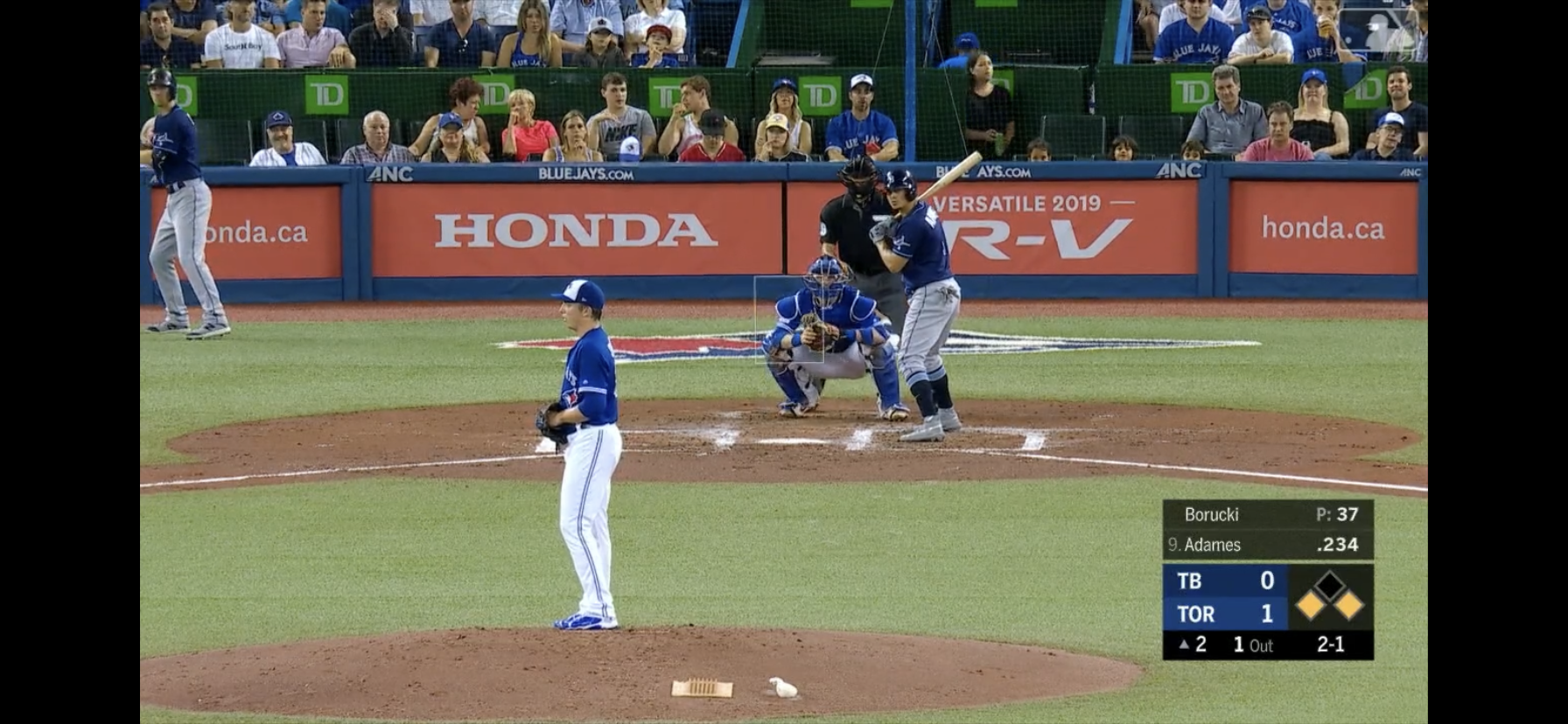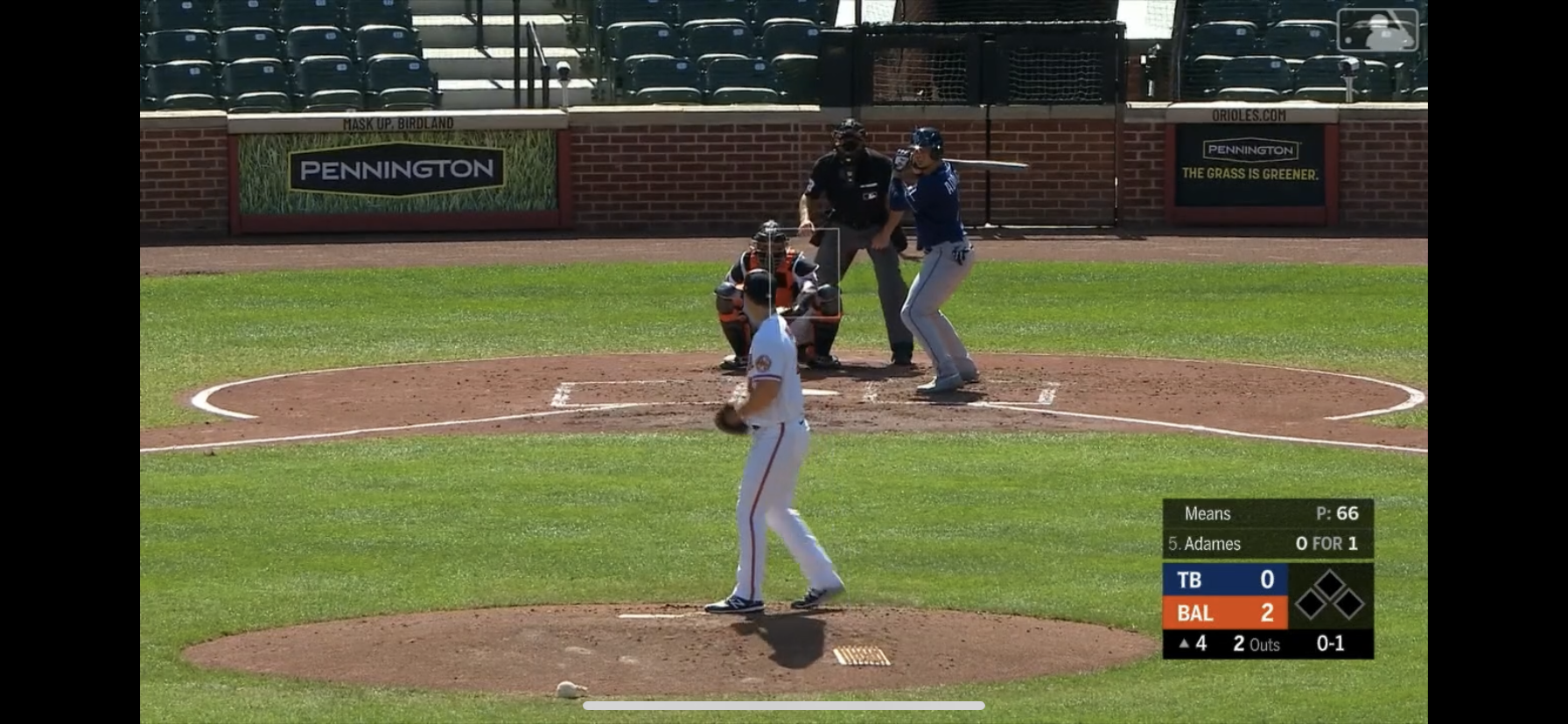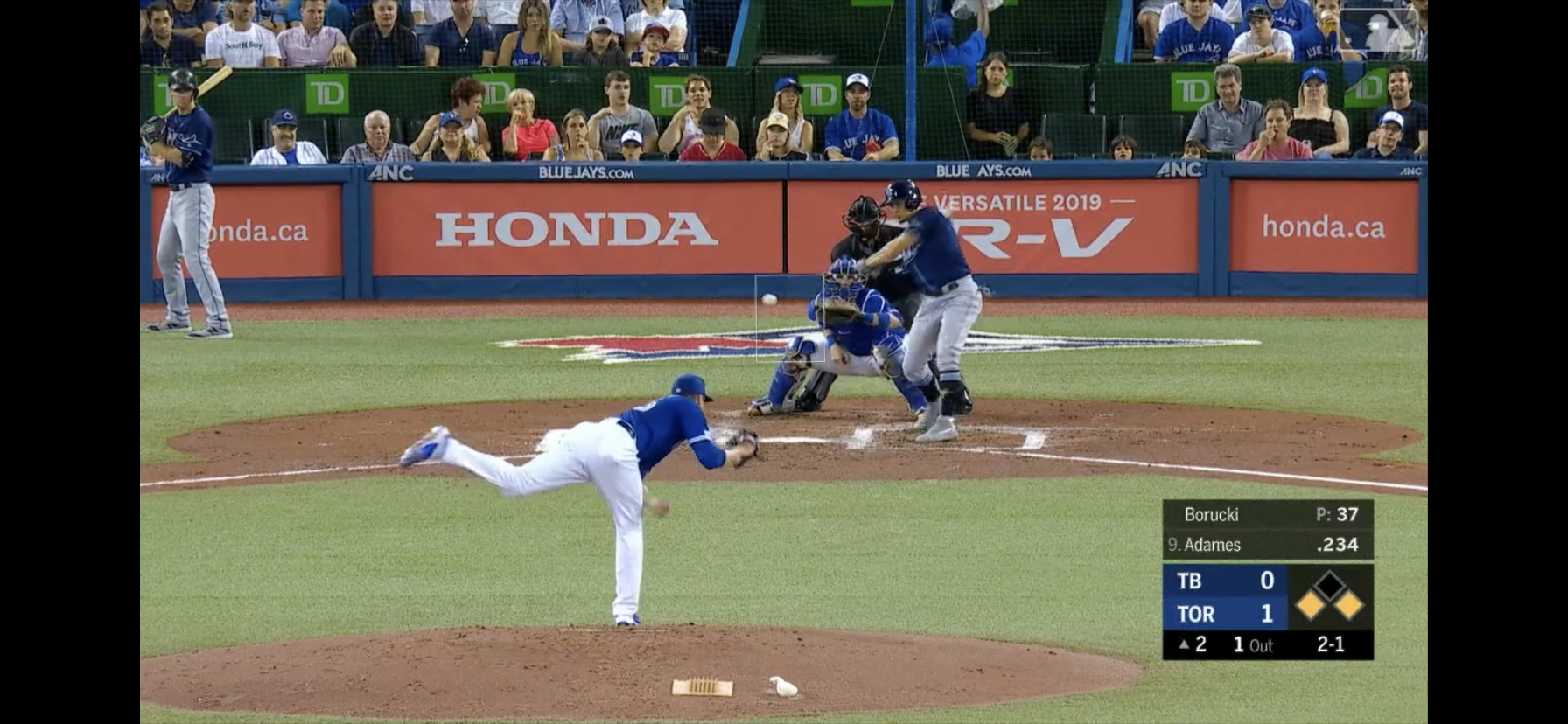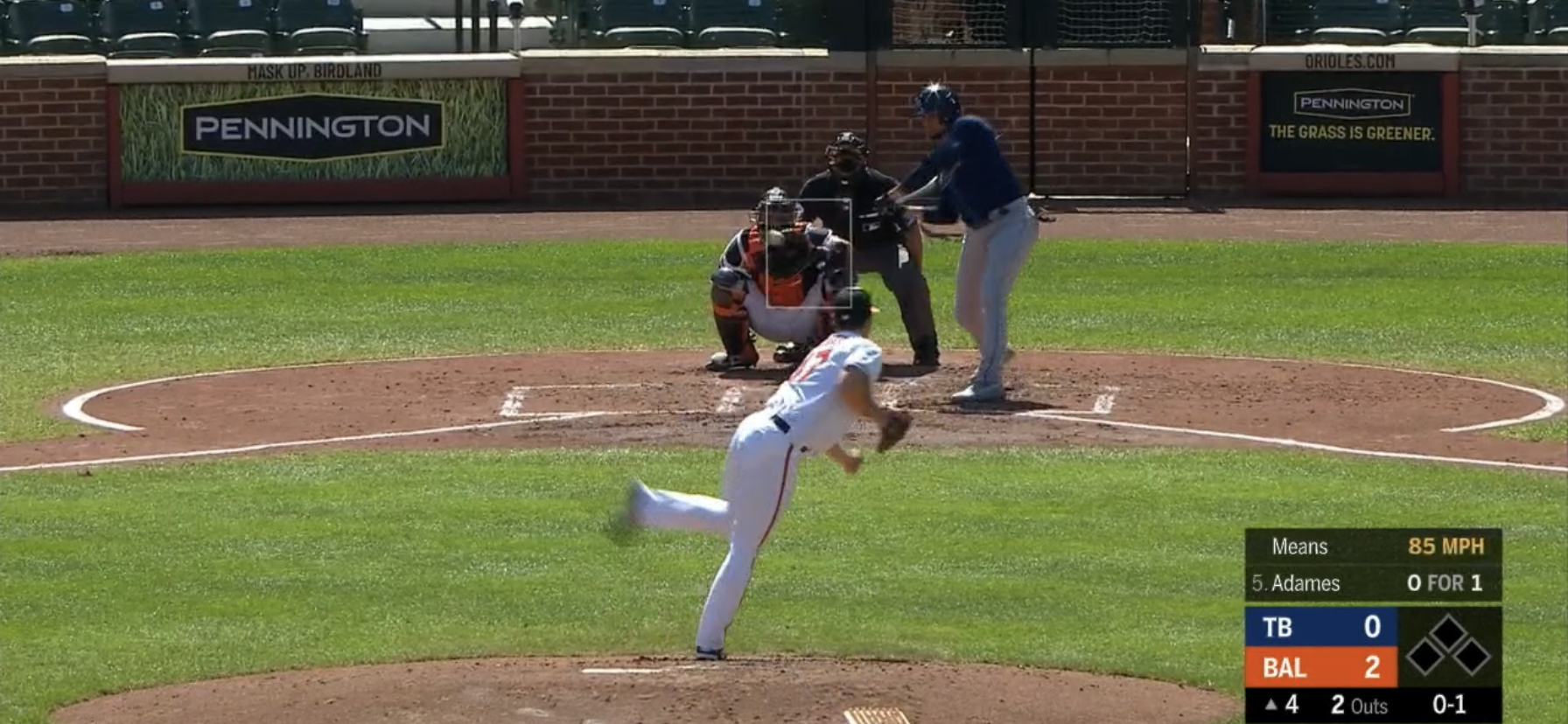From a fantasy perspective, Willy Adames has never generated a lot of buzz. Despite posting a career 106 wRC+ as a shortstop, his lack of a truly elite skill has kept him off of radars and toward the bottom of fantasy rankings.
Heading into the 2021 season, Adames is currently the 30th shortstop coming off the board with an NFBC Average Draft Position of 313. For 12-team leagues, that likely makes him a bench bat or middle infield plug-in. Shortstops going around him include Joey Wendle, Amed Rosario, Miguel Rojas and Nick Ahmed. He’s a 25-year-old shortstop, so it would be natural to assume he is in or is around his peak value in dynasty leagues, but he’s not someone that owners seem to be running out to buy.
Let’s inspect Adames’ track to the majors and his performance in the bigs thus far to determine if he’s someone worth targeting heading into 2021.
The Player
Way back in 2012 a 16-year-old Adames, out of the Dominican Republic, signed with the Detroit Tigers. It wasn’t long before he started to impress on the diamond, but he was flipped from the Tigers to the Tampa Bay Rays as part of the David Price deal in 2014.
In the Rays system from 2014 through 2018, Adames hit (and walked) at every level.
| Stat | 2014 (A) | 2015 (A+) | 2016 (AA) | 2017 (AAA) | 2018 (AAA) |
| Games | 27 | 106 | 132 | 130 | 64 |
| BB % | 13.2 | 11.8 | 13.0 | 11.2 | 9.7 |
| SLG | .433 | .379 | .430 | .415 | .412 |
| wRC+ | 132 | 121 | 135 | 119 | 114 |
Despite being a great hitter at every stop, Adames was consistently seen as a better real life prospect than a fantasy one. He was well-rounded and above-average across the board. He could hit home runs, but not enough to be considered a power bat. He could run well on the base paths, but not well enough to be considered a burner. He could hit for contact, but not well enough to be considered a future threat for batting titles. You get the picture. From a dynasty perspective, he was seen as someone who could help your team, but not someone who would win you your league.
To date, he’s more or less lived up this prospect reports. In 291 career games, he’s been an above-average real life shortstop, compiling a 5.7 fWAR. For fantasy, he has been good but unspectacular with a .262 batting average, 38 career home runs and 12 stolen bases. For full season numbers, that comes out to about an average of 21 home runs and seven steals. Again, that will probably help your team, but it’s not getting many owners too excited.
2018 v. 2019 v. 2020
Despite having relatively similar production in 2018, 2019, and 2020, Adames’ approach at the plate has changed quite a bit.
| Stat | 2018 | 2019 | 2020 |
| BB % | 9.6 | 7.9 | 9.8 |
| K % | 29.4 | 26.2 | 36.1 |
| EV | 86.7 | 88.5 | 88.8 |
| LA | 8.5 | 10.8 | 12.5 |
| Hard Hit % | 29.6 | 35.6 | 40.5 |
| AVG | .278 | .254 | .259 |
| SLG | .406 | .418 | .481 |
There is a lot going on here. The walk and strikeout rates have bounced around the last three years, while Adames has consistently upped his launch angle, hard hit rate and average exit velocity. As a result, he’s consistently hit for more power year-by-year, perhaps at the expense of his batting average. Despite actually improving his batting average from 2019 to 2020, Adames’ expected batting average sat at a lowly .229. Pair that with the his career high .388 BABIP and massive spike in strikeout rate and it’s safe to say that he got a bit lucky with his batting average in 2020. Adames’ profile looks like that of someone selling out contact for power, but let’s look under the hood a bit more to see what is going on.
| Stat | 2018 | 2019 | 2020 |
| Zone | 50.5 | 50.0 | 46.5 |
| Zone Swing % | 69.9 | 69.0 | 69.1 |
| Chase % | 22.9 | 24.7 | 26.3 |
| Whiff % | 27.7 | 27.2 | 38.7 |
| Pull % | 34.2 | 33.5 | 51.4 |
Based on this chart, Adames has started seeing fewer pitches in the zone and has started swinging out of the zone a bit more. But the numbers that jump off the page are the increase in whiff rate and pull rate. They are simply nowhere near where they were in 2018 and 2019. Adames’ whiff rate climbed to 38.7% in 2020, putting him in the bottom two percentile of all qualified hitters. This helps further explain his low expected batting average, despite his improvements in EV and hard hit rate. Adames is hitting the ball a lot harder, and more likely to reach base when he does make contact, but the swings and misses are putting a cap on any potential improvements. The jumps in whiff rate and pull rate again indicate that this could be an intentional adjustment by Adames to try and unlock more power and hit more home runs over the left field wall. Alex Bregman did something similar in 2018 which helped lead to his breakout, but Bregman also has one of the best eyes in the game.
A look below shows the changes in Adames’ Swing rate per zone.

2019

2020
For the most part, Adames increased his swing rate on pitches that were middle or in and decreased his swing rate on pitches that were on the outside part of the plate or off the plate away. This again points to Adames trying to focus on turning on pitches. A look at his 2019 slugging may show why.

2019
In 2019, Adames had much more success hitting for power on offerings that were in the inner two-thirds of the zone. In particular, he was less successful, relatively speaking, on zone pitches that were up and away and down and away. Of his 46 extra base hits in 2019, just five of them came from the outer part of the zone. It appears that Adames made an effort to swing less often at those pitches in 2020 and instead tried to swing more at the pitches in his wheel house. Naturally, swinging at fewer pitches away and more pitches middle leads to an increase in pull rate, and that’s exactly what happened.
It also appears that Adames made a slight adjustment to his stance at the plate.

2019
In the above 2019 snip, Adames has his hands about even with his chest and is holding the bat at 45 degree angle. The stance is slightly closed. From here, Adames would bring his hands up and utilize a big leg kick before starting his swing. In the below photo, he has his hands even with his head and the bat running horizontal across his shoulder. The stance is closed, but slightly less so, and he is more in an upright squatting position. He still utilizes a big leg kick, but no longer needs to move his hands as much while the pitch is en route.

2020
The adjustments are minor to the eye and there are even some instances of Adames using this stance toward the end of 2019. My guess is that this tweak in his approach is an attempt to simplify and quicken up his swing. Here’s a look at Adames as he gets into his swings against two similarly located pitches against left handed pitchers. Both resulted in home runs.

2019
As Adames finishes his leg kick in 2019, his front leg is now toward the third base side. So while he started his stance closed, it is now open as he gets into his swing. He has almost fully cleared his hips before the ball even arrives and well before he makes contact. By the time he does make contact, most of his power is likely coming from his upper body.

2020
His 2020 swing looks a lot different. After landing his leg kick and starting his swing, his front foot is more straight away. He’s only now starting to clear his hips and his upper body and lower body are more in sync. Logically, he should have more power in his 2020 swing as it is using both his lower and upper body. Although both pitches resulted in home runs, his 2020 home run had a higher EV and traveled farther, despite it being against a pitch that was six mph slower.
Based on appearance, you would think Adames’ 2019 swing would have led to a higher pull rate than his 2020 one. But the reason for the increase of his pull rate goes back to the pitches he swung at more in 2020. By focusing more on the pitches on the inner part of the plate, Adames’ pull rate naturally increased.
Most importantly though, what does all this mean? Did these changes work? It’s tough to say. Adames’ .481 slugging was a career high by a wide margin so based strictly on results – yes, it did. He hit for considerably more power in 2020. But his xSLG checked in at just .395. To go along with the massive spike in whiff rate, Adames also more than doubled his popup rate in 2020, which certainly aided in keeping his expected stats low.
It also appears that pitchers started to figure out Adames in the second half of the season. In September, Adames triple slashed .203/.263/.405 and struck out in 34 of his 80 plate appearances. His whiff rate on pitches in the upper inside part of the zone was an astounding 57% for the year, so it seems that Adames’ swing adjustment leaves him vulnerable to pitches high and inside. And while he increased his average EV on breaking and offspeed pitches from 2019 to 2020, his average EV on fastballs dropped by three mph, perhaps further indicating that his adjustment is causing him trouble on heat in certain parts of the zone.
Conclusion
Adames made an approach and swing adjustment in 2020 in an apparent attempt to hit for more power. The power did come and is legitimate too – his 96.1 mph average EV on flyballs and/or line drives ranked 18th overall among qualified hitters, tying him with Mike Trout and putting him just behind perennial power hitters Joey Gallo and Matt Olson.
While the adjustment did lead to more power, it also brought along a lot of red flags. Adames was one of the worst hitters in the league when it came to whiff and strikeout rates. And while he is a hitter that has gone through hot and cold stretches in the past, his September numbers could have been the result of pitchers figuring out how to attack his new approach.
Given that 2020 was just a 54 game sample in a year when his approach changed it’s difficult to know what to expect from Adames from a fantasy perspective moving forward. But based on 2020, the perception of him should be almost the exact opposite of what it has been in year’s past. Historically, Adames has been a “safe” late round pick with a low variance of expected outcomes. Now? His profile is more boom or bust. In a best case scenario, Adames is able to adjust with more repetitions to the vulnerabilities that his new approach allows, maintain his power gains and cut down on the strikeouts. This could potentially lead to a 30 home run, 10 steal season, which would greatly outproduce his ADP. In a worst case scenario, he cannot adjust and pitchers more consistently attack his weak zones, causing his expected stats to catch up to him and his batting average to dip dramatically. Given his late ADP, it’s probably worth taking a shot on his new potential upside and cutting bait early if the strikeout rate stays where it sat in 2020.
From a dynasty point of view, Adames’ outlook is a bit murkier. Adames had a near-everyday role in 2020, which is rare for a Rays player. But Tampa Bay also has the best farm system in baseball, including the best prospect in baseball – Wander Franco – who just happens to play the same position as Adames. If Adames struggles, his job could soon be in jeopardy. On the flip side, Adames has such drastic home/away splits (career 77 wRC+ at home, 135 on the road) that it feels like it has to be more than just randomness and if the Rays deal him down the line it could be a big boost to his stock. All things considered, Adames is hold if you own him and a potential buy if you don’t given that the asking price is probably low enough to make the gamble on the new upside worth it.
Photo by Mark LoMoglio/Icon Sportswire | Adapted by Justin Redler (@reldernitsuj on Twitter)
